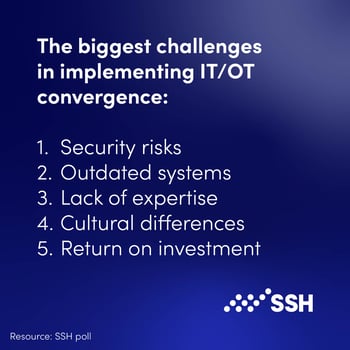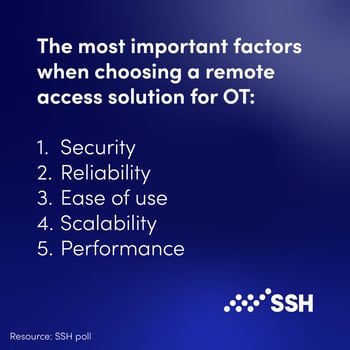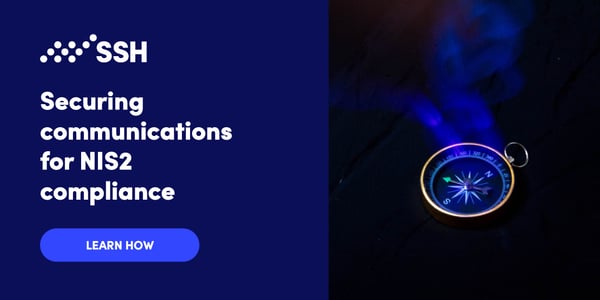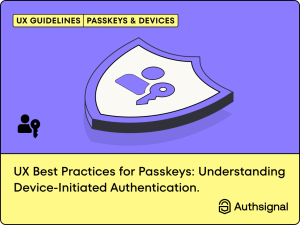
Operational Technology (OT) and manufacturing businesses are prime targets for cybercriminals. Why? Because OT security is lacking behind the IT sector, such as banking and retail.
For instance, ransomware incidents targeting OT systems have surged, doubling in 2022 compared to the previous year. According to the State of Ransomware 2023 report, over half of OT and manufacturing enterprises experienced ransomware attacks in 2023, leading to significant business and revenue losses for more than a third of them.
OT security experts emphasize the urgency: Do not delay in modernizing and upgrading your systems. Take proactive steps to overcome system limitations now.
Here are three essential strategies to secure your OT environment for the digital era.
1. Utilize the strengths of your IT and OT together

To propel your OT business forward, begin by thoroughly understanding your environment—without this foundational knowledge, effective security measures cannot be implemented. Next, ensure clear ownership of your IT and OT assets by assigning responsibility to the appropriate individuals, teams, or third-party organizations.
Additionally, recognize the distinct requirements of OT compared to traditional IT needs. OT environments prioritize maximum productivity while prioritizing physical safety, as any malfunction can pose physical risks to on-site employees and disrupt production, leading to financial losses.
Only after addressing these fundamentals can you fully embrace IT/OT convergence and capitalize on its potential benefits. This includes leveraging big data and AI models to optimize OT processes, enhancing efficiency and profitability.
As highlighted by Jouni Hiltunen, Lead Technology Advisor, Enterprise & Cyber Security at Fujitsu Finland, “OT cannot operate in isolation from IT and IT risk management because data flows seamlessly from the factory floor to enterprise management systems globally and in real-time. Maintaining confidentiality, integrity, and availability is crucial, as disruptions can translate directly into financial impacts.”
2. Employ a modern secure access and access control solution

To ensure secure access to both OT and IT systems, a centralized access management solution is essential—a gatekeeper that facilitates control over internal user and third-party vendor access. Typically, this is achieved through PAM solutions.
Your next-generation PAM solution for OT should encompass the following features:
- Zero Trust architecture: Enforces strict access controls with principles of just-in-time and just-enough access, along with role-based access control for precise permissions.
- Software-based, agentless solution: Easily integrates with existing components like Active Directory (AD), Security Operations Center (SOC), and Security Information and Event Management (SIEM) systems, without impacting hardware infrastructure.
- Deployment flexibility: Supports deployment in the cloud, on-premises, or in hybrid environments, with access options via web or client software.
- Support for industrial protocols: Accommodates various industrial protocols seamlessly, without necessitating an application server.
- Comprehensive auditing: Maintains full audit logs of all connections, includes session recording, and provides real-time monitoring capabilities.
- Scalability: Designed for easy scaling across multiple sites, leveraging a microservices architecture for rapid deployment.
Regarding OT security, it’s crucial to heed Jouni Hiltunen’s advice: “While preventing all security incidents may not be possible, containment measures are essential to minimize their impact.”
3. Comply with industry standards (but keep in mind your OT security setup)
Industry standards such as ISO27001, IEC62443-3, or NIS2 should form the foundation of your OT security strategy, but they are not exhaustive step-by-step guides. Achieving compliance with these standards does not guarantee immunity from security incidents or prevent potential cyberattacks in the worst-case scenario.
Standards serve as frameworks to ensure interoperability, compatibility, and sometimes regulatory compliance. However, the initial step involves comprehending your specific security requirements before aligning your practices with these standards.
Watch our expert webinar on “Securing your OT in the age of digital transformation”
Dive deep into the topic of OT security in the digital age – watch the recording of our expert webinar: https://youtu.be/lSwTe3azwAY
Source: https://www.ssh.com/blog/tips-on-securing-ot-in-the-digital-age?
About DT Asia
DT Asia began in 2007 with a clear mission to build the market entry for various pioneering IT security solutions from the US, Europe and Israel.
Today, DT Asia is a regional, value-added distributor of cybersecurity solutions providing cutting-edge technologies to key government organisations and top private sector clients including global banks and Fortune 500 companies. We have offices and partners around the Asia Pacific to better understand the markets and deliver localised solutions.











